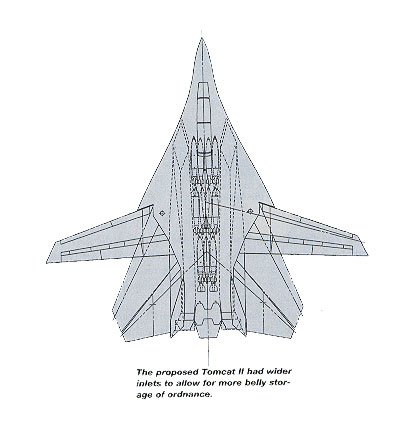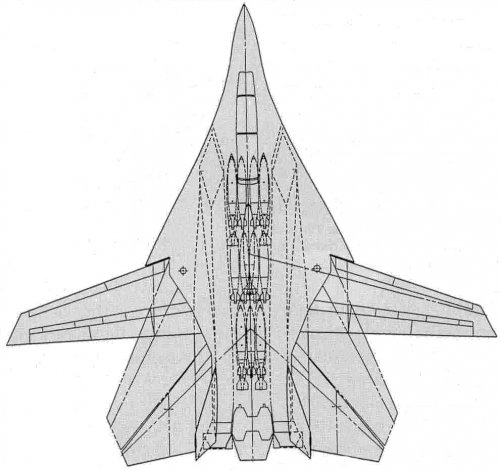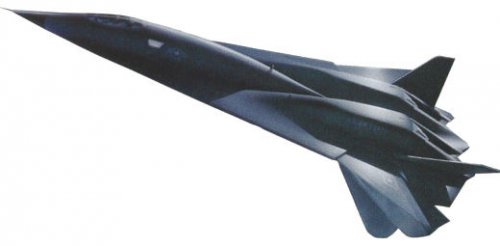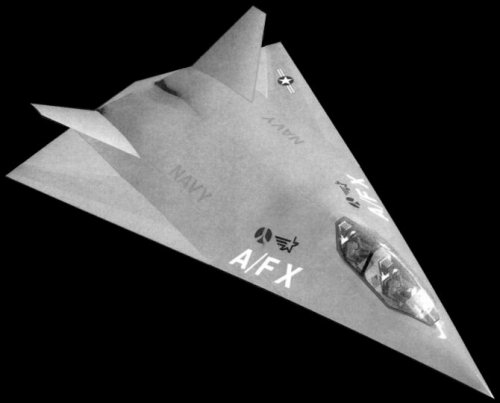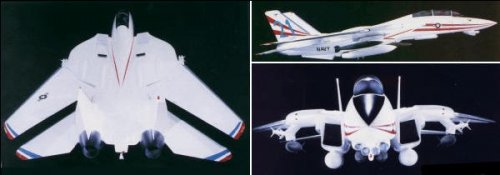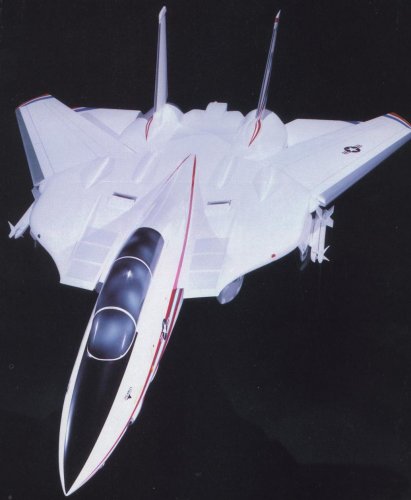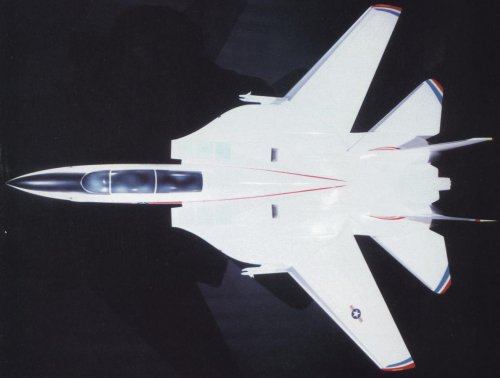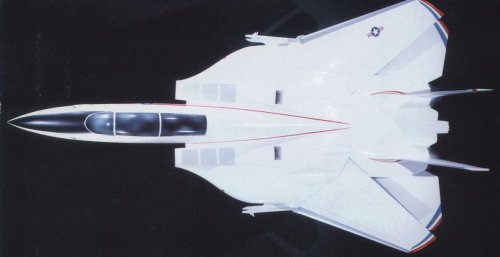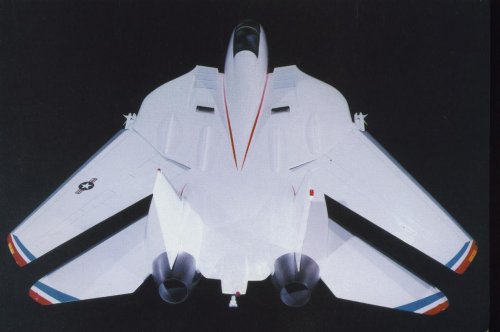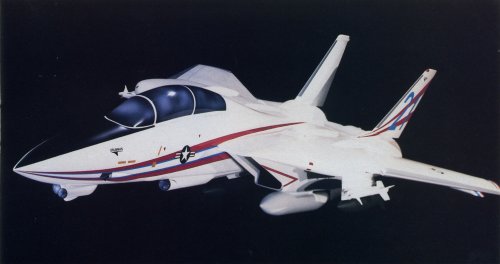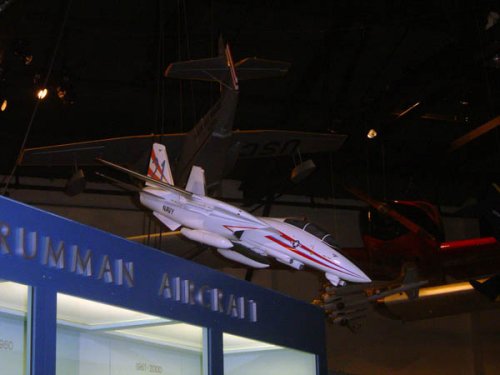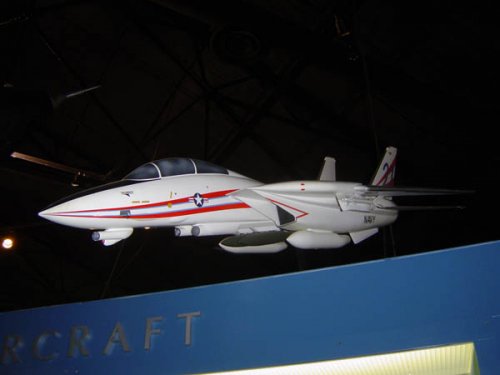"
Seeing how that is FAR from the general concensus do you have any cites backing your claim?"
I don't know if discussions of F-14 vs. other current fighters' agility is really germane to this forum, but if the moderator leaves it on, I'll address it this once. Notice that I specified the F-14D. That was for a reason, although most of this would apply to the F-14B as well.
A little background: Most comparisons have been made between other fighters and the F-14A. Although more of those were built than any other version, it was not originally planned that that version would go into production. This version was only planned to number 13 to 69 aircraft, to develop the aircraft and get into service while awaiting the arrival of the (original) B model which would feature the actual production configurations and especially the PW401 engine, which would be a more powerful naval derivative of the Advanced Technology Engine, which would appear in USAF service as the F100. However, USAF accepted their version at a level of reliability that was unacceptable to the Navy and the USN couldn't afford to bring their version up to an acceptable level alone, so they chose to stay with the awful TF30 used in the A model and not do the enhancements of the B.
The F-14 airframe was always designed around use of two 27,000 lb thrust engines. The TF30 only put out 20,900 lbs. This causes even more problems than what appears a t first glance; a 23% drop from expected thrust hurts a design far more than an extra 23% would enhance it. Consider the impact on Typhoon if its engines only put out 15,500bs of thrust instead of 20,000. The tunnel area between the engines has some unusual benefits. The fuselage of the F-14 acts much like a lifting body as airflow is channeled between the two widely separated engines. In fact the F-14 can be thought of as a lifting body with three nacelles (2 engines and crew/systems nacelle) attached, plus wings. The 565 ft2 of the wings is augmented by an additional 443 ft2 of the lifting body for a total effective lifting area of 1008 ft2. This extra lift is available in all flight configurations, but is most effective when the wings sweep back, and in a sense lowers the wing loading to a value less than would be expected than by just looking at the regular wing area. The problem is, this also creates drag, which the TF30s don't have enough thrust to overcome, so the tighter turns facilitated by the lifting body can't be sustained in the A. Although the A accelerates and climbs real well, it's nowhere near as good as what the plane would be cable of with the right thrust.
Additionally, the TF30s were a disaster. In air combat maneuvering, the pilot not only has to fly the plane, he has to monitor the engines to insure they aren't going to quit. He also has to move the throttles carefully, otherwise the TF30s might quit. Finally, maneuvers that might prevent air from flowing down the intakes smoothly (high AoA, rapid changes in direction) have to be handled with care so the TF30s don't quit. Of course, they don't always quit when exposed to these flight regimes--sometimes they blow up. As a result, A models have to be "held back" from using their full agility lest they become gliders or worse. With the arrival of the superb F110 engines, the limitations no longer apply, the engines can be flown with abandon, and the Tomcat has the thrust for which its airframe was designed. In addition, with the incorporation of the Digital Flight Control System (thank you, UK) which replaces the original system planned for the original B, the Tomcat could now maneuver at the high AoAs of which it was capable. There wasn't much point in spending too much on this before since attempting to maneuver at high AoAs with the TF30s could end badly.
The Tomcat wasn't more agile at everything, but no aircraft is. At comparable thrust to weight ratios, its always turned tighter than the F-15, but couldn't sustain the performance before the F110s. (Side note: In the Iranian flyoff, the Tomcat pilot kept burning fuel on the ground until his thrust/weight matched that of the F-15 and then outflew it.) It accelerates/decelerates very fast. It out turns the F-15 and F/A-18, has better high AoA capability than the F-15 and -16 (but nobody of its generation beats the Hornet at low speed/high AoA). Thanks to the VG wing and fuselage, the Tomcat can outturn other aircraft at supersonic speeds. I believe a D will out-accelerate all the others over a large airspeed range. Multiple close-in "fights", both sanctioned and spontaneous between F-16s and Tomcat B/Ds tend to come out as draws. With the A, although it outmaneuvered all previous fighters, unless the Falcon pilot made a mistake, close-in the F-16 almost always won.
One of the other reasons you didn't hear much over the years about what the Tomcat could do was because of the strong Hornet lobby within naval aviation. It's no accident that at its last public appearance at NAS Oceana the F-14 was restricted from demonstrating its prowess and was only allowed to make a few passes always accompanied by Hornets, nor was it an accident that at its retirement ceremony, the Tomcat was flanked by two Super Hornets and was only allowed to takeoff and fly away, no demo, no last "beat up" of the airfield.
Again, my statement was not that the Tomcat B/D was better at Everything, but that it was more agile overall than the -15 and -18. Sensor-wise, it definitely was better than all of them and its two crew design gave tit a great advantage in the many vs. many arena. Could go into more detail, but this post is already too long and it's really outside the realm of what this forum is about.

